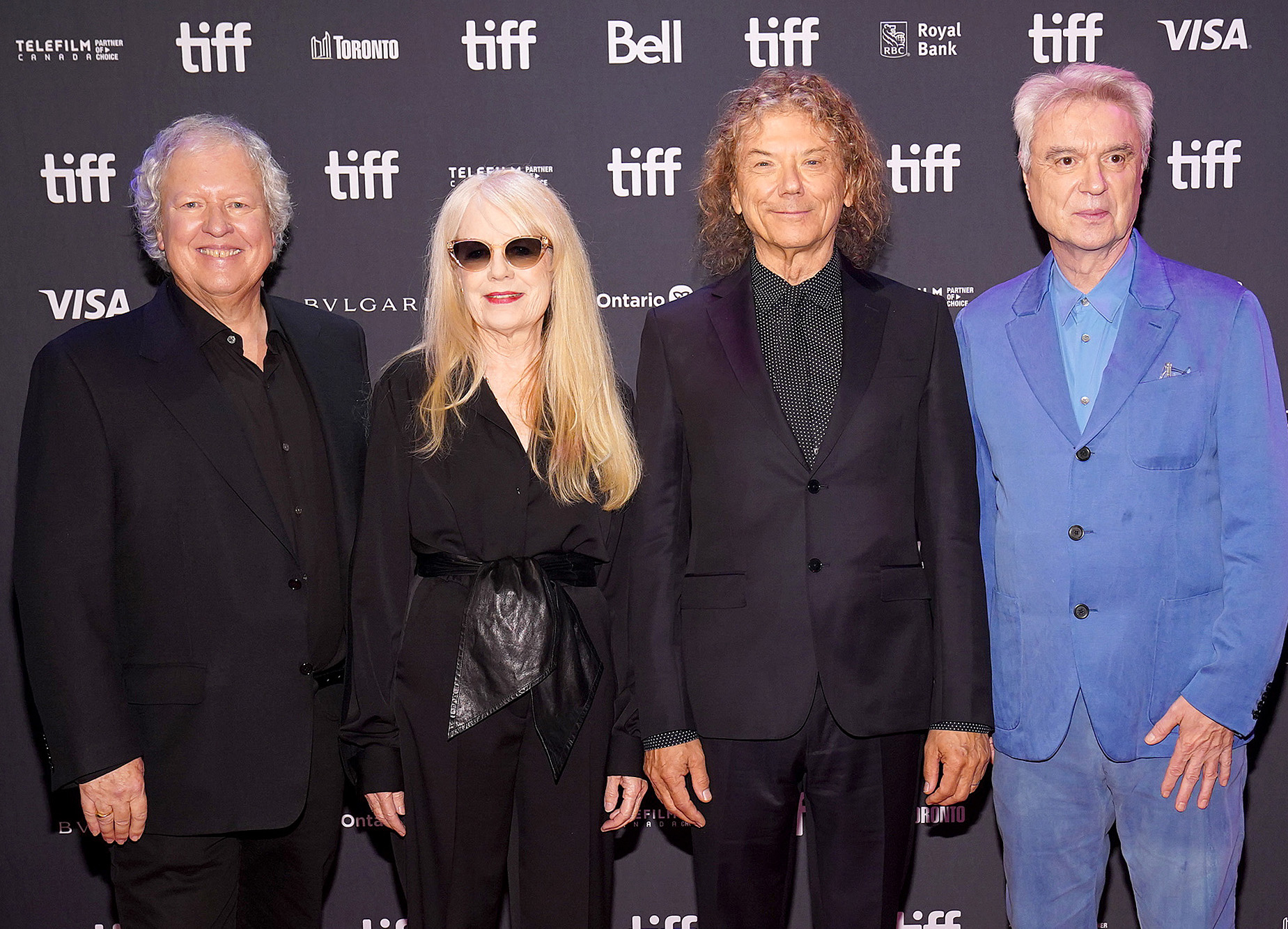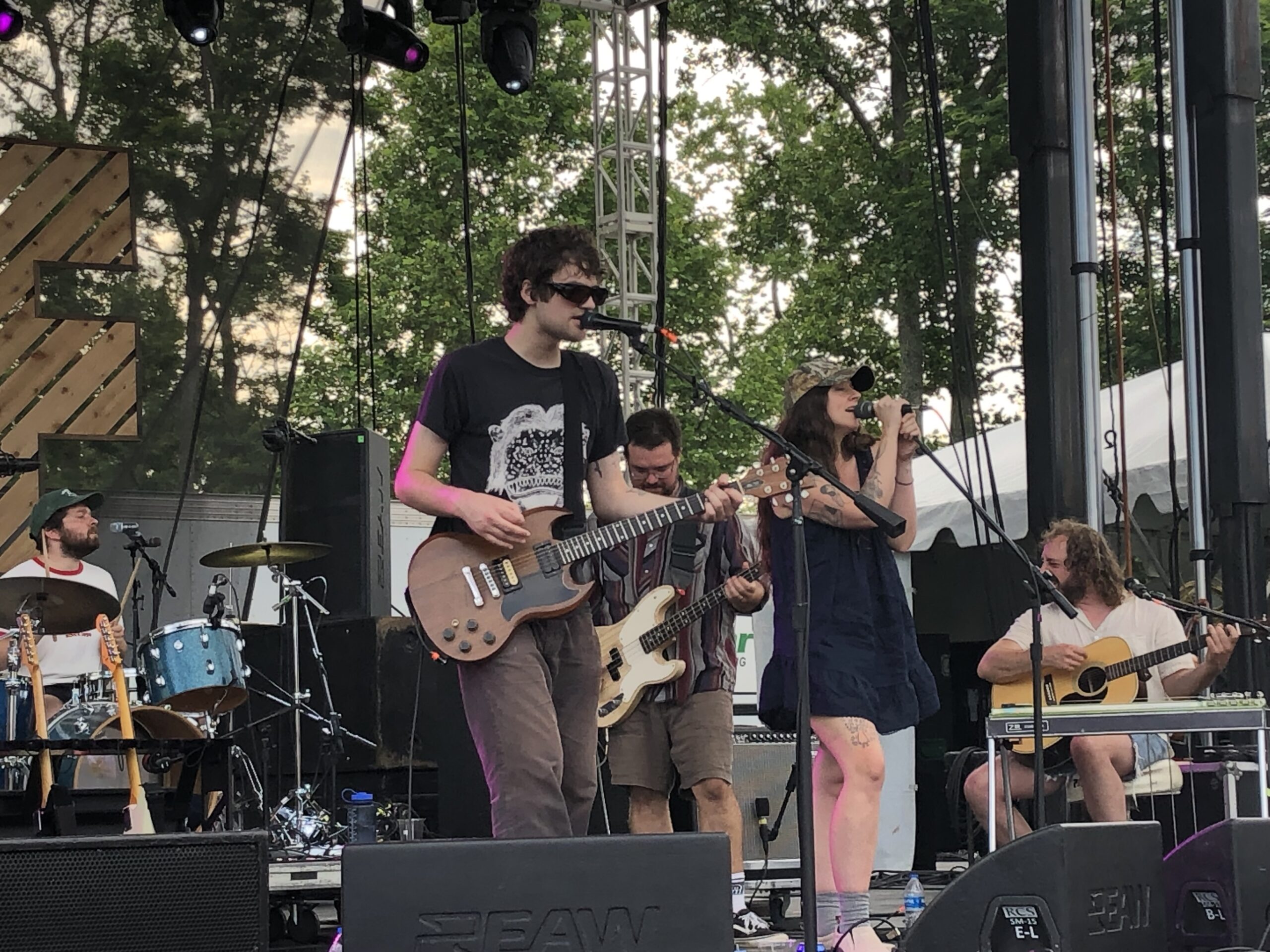Last night at the Toronto International Film Festival, the four core members of the Talking Heads — David Byrne, Tina Weymouth, Cris Frantz, and Jerry Harrison — were back onstage together for the first time since their 2002 induction into the Rock & Roll Hall Of Fame. After decades of public feuding, they came together at Toronto's Scotiabank Theatre to mark the premiere of Stop Making Sense, restored and enhanced from its original negatives and playing on IMAX for the first time.
"You know I love cinema, and this is the greatest concert film ever," proclaimed host Spike Lee at the outset of the night's Q&A. "Can we give it up please? I'm going on record."
While the band members seemed too modest to express agreement, the audience's applause more than validated Lee's claim, which has become a near consensus among critics, cinephiles, and music fans across the four decades since the film's release. But for such a widely beloved film, Stop Making Sense has been notoriously difficult to experience as originally intended by director Jonathan Demme.
"When I was watching this just now, I was thinking, this is why we come to the movie theaters. This is different than watching it on my laptop. This is really different," Byrne said, capturing the sense of fulfillment that fans in attendance had sought for years. The film saw tepid commercial success when released in 1984, leaving the band members in the red after self-funding it, and developed a strong but limited presence in cult and repertory cinemas. In its subsequent releases to home video formats, it underwent curious rearrangements with little enhancement, and today the easiest place to see it is probably on YouTube. The idea that Byrne himself has struggled to find a good copy of the film underlines the importance of last night's premiere.
"The fact that there is new technology meant we almost have a burden to adapt and to bring it up to what people can hear now in theaters," said Jerry Harrison. "One of the things I noticed is that with the multi-channel audio, if I wanted to listen to Bernie [Worrell], I can hear the whole mix, but I can just listen over there and I can hear him. In a way that you couldn't in '84 and even in '99. And so it's a delight to see. The fact that we found the original negative lets us bring it back to life as much as possible and make the sound appropriate to the theaters like the one that you just got to listen to it in."

Seeing Stop Making Sense in its restored and enhanced format, let alone on a massive IMAX screen, rendered the film fresher and more vital than ever. Demme has said that he shunned the crowd shots common to concert films in order to let viewers have a more personalized experience of the performance. When seen on the big screen, this changes from being a concept to something visceral — a single establishing shot during opener "Psycho Killer" shows the front rows of the theater on the lower half of the screen, blending into the theater in real life, making viewers feel like they're in the concert venue. Everything that comes after plays to that vantage point to thrilling effect, not least "This Must Be The Place (Naive Melody)," which presents the performers as if they're standing in the living room with you while Byrne earnestly scans the crowd. Or there are the ripples in Byrne's giant suit that now dance in waves over his body and turn an iconic image into visual poetry.
Byrne recounted the origin of the suit, how it was influenced by Japanese theater, recalling a conversation with a designer in Japan: "[He said] 'Well, David, in the theater, everything is bigger than real life.' He's referring to, like, gestures, and you sing louder and all that, and I'm thinking, 'Oh, my suit should be bigger, too.'"
"It was really big tonight," quipped Frantz, making his submission for the TIFF Best Dad Joke Award.
"One thing I can say about the suit is that there were two of them that were made," continued Harrison. "And actually, the one that you used was a friend of mine who made it, because the second one had sort of plastic, was lighter, but it didn't move with your body the same." "Yeah, I couldn't do all that shaky stuff," Byrne added.
These are the types of nuances that the restored film made possible to notice and appreciate, and they lifted it to a greater level of artistry than even the most familiar viewer could anticipate. Critics have long praised Demme's visual style in the film — the references to German expressionism, the lighting influence of Robert Wilson — but the effect of seeing the restored film on the big screen was one of taking well composed images and expanding them into an immersive experience.
Stop Making Sense was known for inspiring dancing among its theater audiences, and while it was unclear at first whether the icy industry crowds of TIFF would capitulate, the butts came out of the seats starting with "Burning Down The House." It helped that all four band members led the party. Byrne rose out of his seat closest to the front and danced exactly as awkwardly as anyone could've asked while Frantz and Weymouth stuck together and Harrison joined the revelers at the back of the theater. "Although it's a little steep for dancing, some people managed to get up. I got up! I got up!" said Harrison. "I couldn't sit at the side seat, I had to walk up to the back…dance around a little bit, and just sort of experience it. I didn't want to be off at the side."
Byrne added, "I understand that a good percentage of folks here are festival subscribers, which is great. The festivals need subscribers. But that might mean that you didn't know exactly what you were getting into."
While much of the event's hype revolved around the band's reunion after years of public vitriol, the night saw the members in high spirits as they focused exclusively on the film and its production. This was likely in part because the night seemed tightly curated to avoid unpleasant topics and interactions: The Q&A lasted a meager 30 minutes and only contained vetted questions submitted online; no non-married band members sat next to each other during the screening.
But Frantz and Weymouth, who have feuded most publicly with Byrne, seemed as happy as anyone and expressed good natured self-deprecation. Commenting the film's inclusion of "Genius Of Love," which had caused friction in the band, Frantz joked, "Tom Tom Club is cool, but I wish I kept my mouth shut a little bit more than that." Prompted by Lee to talk up her bass playing skills, Weymouth said, "My big contribution was I never turned my amp up past three. And that way it left room for everybody else to shine. Because if the bass player gets too loud, forget about it."
Maybe we could've hoped for more: a longer Q&A turning up more nuanced and previously unknown Talking Heads facts; public reconciliation between the members; a reunion announcement. But the shared sense of joy in the theater eclipsed everything else. We were there, band members and audience alike, dancing together and finding new ways to appreciate this film that weren't apparent on our goddamn laptops. A few TIFF subscribers probably even went home and asked their adult children to google "Talking Heads" for them.
"It's so good to be here with my bandmates tonight. It's a beautiful day. A beautiful day. A beautiful day. A beautiful day," Frantz had said at the night's outset. For a couple rare hours, the Talking Heads were back together and having fun.
https://youtube.com/watch?v=kGq6qIcSaZghttps://youtube.com/watch?v=TkUMwQpR15o /wp:paragraph -->






